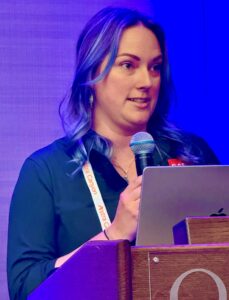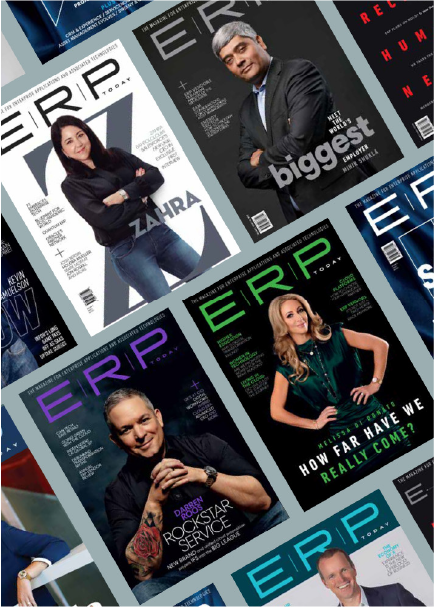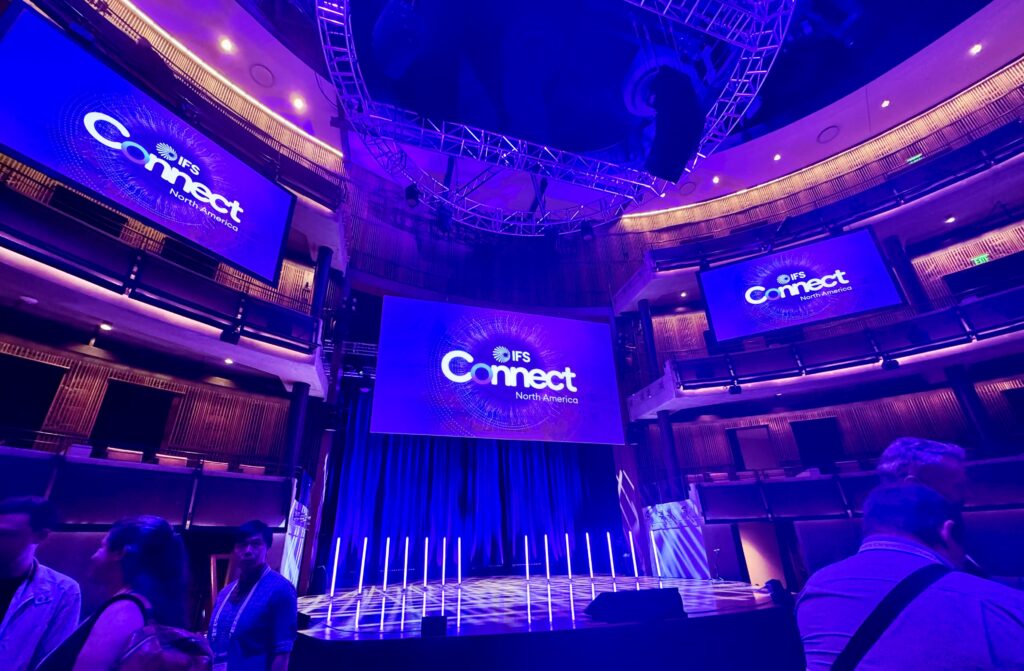 When Lauren Fourt stepped up to present at IFS Connect North America 2025 in Nashville, she carried with her a story that resonates across American manufacturing: how do you preserve the irreplaceable knowledge of retiring workers before it’s gone forever? As GAF’s Lean Continuous Improvement Lead, Fourt has spent the last three years orchestrating one of the most comprehensive digital transformation initiatives in the roofing industry.
When Lauren Fourt stepped up to present at IFS Connect North America 2025 in Nashville, she carried with her a story that resonates across American manufacturing: how do you preserve the irreplaceable knowledge of retiring workers before it’s gone forever? As GAF’s Lean Continuous Improvement Lead, Fourt has spent the last three years orchestrating one of the most comprehensive digital transformation initiatives in the roofing industry.
GAF isn’t just any manufacturer. Since 1886, the company has grown to become North America’s largest roofing and waterproofing manufacturer, protecting homes with everything from architectural shingles to commercial roofing systems. With 30 sites across the United States and 4,800 employees, GAF has weathered economic storms, technological shifts, and now faces perhaps its greatest challenge yet: the Great Resignation’s manufacturing exodus.
“We’re in that boat where we’ve got folks that are starting to retire or going to retire soon, or plants where folks have retired, and we are losing some of that tribal knowledge,” Fourt explained to the Nashville audience. It’s a problem that keeps manufacturing executives up at night—decades of hard-won expertise walking out the door, taking with it the subtle know-how that makes the difference between smooth operations and costly downtime.
The Kaizen Connection
GAF’s solution wasn’t just to implement another digital platform—it was to reimagine how knowledge transfer happens on the factory floor. Enter IFS Poka, a connected worker platform that transforms traditional work instructions into dynamic, video-rich guides that operators can access on tablets and mobile devices.
But here’s where GAF got creative: they married digital transformation with lean manufacturing principles, specifically using Kaizen events—those intensive, focused improvement sessions that Toyota made famous—to drive content creation. “We had the idea of starting or using Kaizen events to facilitate the creation of content at our sites,” Fourt shared.
These aren’t your typical corporate training sessions. GAF’s Poka Kaizen events are intensive 2-3 day affairs where cross-functional teams—40% of whom are hourly employees—gather to create work instructions in real-time. The genius lies in the approach: instead of asking busy operators to find time between shifts to document their processes, GAF brings them together for dedicated content creation sprints.
The results speak for themselves. Across 11 residential business unit events totaling 25 days, GAF has trained over 140 people and created more than 500 work instructions and 50 skills assessments. That’s not just documentation—it’s institutional memory preservation at scale.
From Paper Airplanes to Process Excellence
 GAF’s training methodology reveals the thoughtful approach behind their success. Every Kaizen event begins with participants making paper airplanes—a simple, universal task that everyone understands. They film themselves folding paper, then learn to convert that footage into structured work instructions using Poka’s interface.
GAF’s training methodology reveals the thoughtful approach behind their success. Every Kaizen event begins with participants making paper airplanes—a simple, universal task that everyone understands. They film themselves folding paper, then learn to convert that footage into structured work instructions using Poka’s interface.
“Pretty much everyone knows how to make a paper airplane, and it doesn’t have to be very complicated,” Fourt noted. “So we pair people up and have them record on a tablet the process of making the work instruction or making the paper airplane.”
This seemingly playful exercise serves a serious purpose: it demystifies the technology while building confidence. By day two or three of the events, participants who started by creating one or two work instructions are producing double or triple that volume. The transformation from hesitant users to confident content creators happens in real-time.
One of the most telling testimonials came from Tim Jones, a production manager who initially believed work instructions had to be written before being filmed. “I didn’t think you could write a work instruction from a video, but you absolutely can, and it was actually pretty easy,” he said after participating in an event.
Fourt didn’t shy away from the challenges GAF faced during their Poka deployment—a refreshingly honest perspective. The company grappled with three main obstacles that will sound familiar to any manufacturing technology leader.
First, the eternal struggle: “We don’t have time to create content.” GAF’s solution was to make time through dedicated Kaizen events, often conducted on overtime while production continued. This required careful coordination and buy-in from plant management, but the investment paid dividends in accelerated adoption.
Second, the perfectionism trap: “Our content isn’t ready” or “our content isn’t good enough.” Here, GAF’s lean philosophy proved crucial. Rather than waiting for comprehensive documentation, they pushed plants to deploy with minimally viable content—even if it only covered one job position or workstation. “Perfection is not the goal,” Fourt emphasized. “Get it out there and let the operators start using it.”
Third, the legacy system challenge that haunts every digital transformation: transitioning from existing document control systems. GAF uses Google Docs and AO Docs for various processes, creating natural resistance to adopting another platform. The company’s approach has been to prove Poka’s superiority through demonstration rather than mandate, highlighting features like automated approval workflows and integrated video capabilities that their legacy systems can’t match.
Strategic Plant Deployment: A Case Study in Change Management
Perhaps most impressive is GAF’s plant-driven deployment strategy. Rather than forcing a one-size-fits-all rollout, the company assesses use cases at each facility and tailors implementation accordingly. Plants can even defer deployment if they lack resources, provided they have a reasonable timeline for readiness.
This approach has yielded remarkable adoption metrics: 22,650 users across their instance, 20 of 30 sites actively using Poka, and over 86,000 form submissions in just three years. More importantly, it’s created a foundation for GAF’s most ambitious goal yet—preparing for their first new shingle manufacturing site in 30 years, scheduled to start up in 2027.
The company has already formed a team to work with multiple existing shingle sites, cherry-picking equipment similar to the new plant and creating comprehensive content libraries. When the new facility comes online, workers will arrive with digital access to decades of manufacturing expertise from day one.
From Tribal Knowledge to Global Standards
GAF’s success with Poka has evolved beyond simple knowledge capture into strategic workforce development. The company is now developing globally applicable content across maintenance, quality, safety, and onboarding that can be deployed instantly at any new site. This represents a fundamental shift from plant-specific knowledge silos to enterprise-wide standard work.
The ultimate vision? Global skills dashboarding that allows GAF to cross-compare workforce capabilities from plant to plant, potentially enabling strategic personnel deployment based on skills gaps and plant needs. It’s industrial workforce management powered by granular skills data—a far cry from traditional manufacturing’s gut-feel approach to staffing decisions.
Aquarius Woods, an operator who participated in one of the Kaizen events, captured the cultural transformation perfectly: “The fact that we came together to do this and bring innovation to the plant was amazing.” That sentiment—hourly workers feeling empowered to drive digital innovation—might be GAF’s greatest achievement.
What this means for ERP Insiders
Embrace event-driven digital adoption. Manufacturing leaders should consider intensive, focused deployment events rather than gradual rollouts for digital worker platforms. GAF’s Kaizen approach generated 500+ work instructions in just 25 days across 11 events—a pace that traditional training schedules couldn’t match. With 73% of manufacturers struggling with knowledge transfer according to Deloitte’s 2024 Manufacturing Industry Outlook, concentrated deployment events create urgency and momentum that overcome typical resistance. IFS Poka’s mobile-first architecture supports this approach by enabling real-time content creation during events, allowing teams to build, test, and refine work instructions simultaneously rather than in sequence.
Prioritize skills visibility over perfect documentation. Rather than waiting for comprehensive documentation, deploy connected worker platforms with minimal viable content and build iteratively. GAF’s “get it out there” philosophy resulted in 86,000+ form submissions and 22,650 active users because workers engaged with imperfect but useful content. Manufacturing leaders face an estimated 2.1 million unfilled positions by 2030 (National Association of Manufacturers), making rapid skills assessment and development critical. IFS Poka’s skills matrix and assessment capabilities provide real-time visibility into workforce competencies, enabling data-driven decisions about training priorities and resource allocation even with incomplete documentation.
Integrate connected worker platforms with existing ERP ecosystems. Manufacturing companies should view connected worker platforms as ERP system enhancers rather than standalone solutions. GAF’s integration plans with their corporate LMS and document management systems demonstrate how Poka can feed skills completion data back to enterprise systems, creating unified workforce intelligence. With ERP modernization projects averaging $15.2 million according to Panorama Consulting’s 2024 ERP Report, connected worker platforms offer a lower-risk, high-impact way to digitize operations. IFS Poka’s API-first architecture enables seamless integration with existing ERP systems, allowing manufacturers to enhance their current technology investments rather than replace them entirely.




